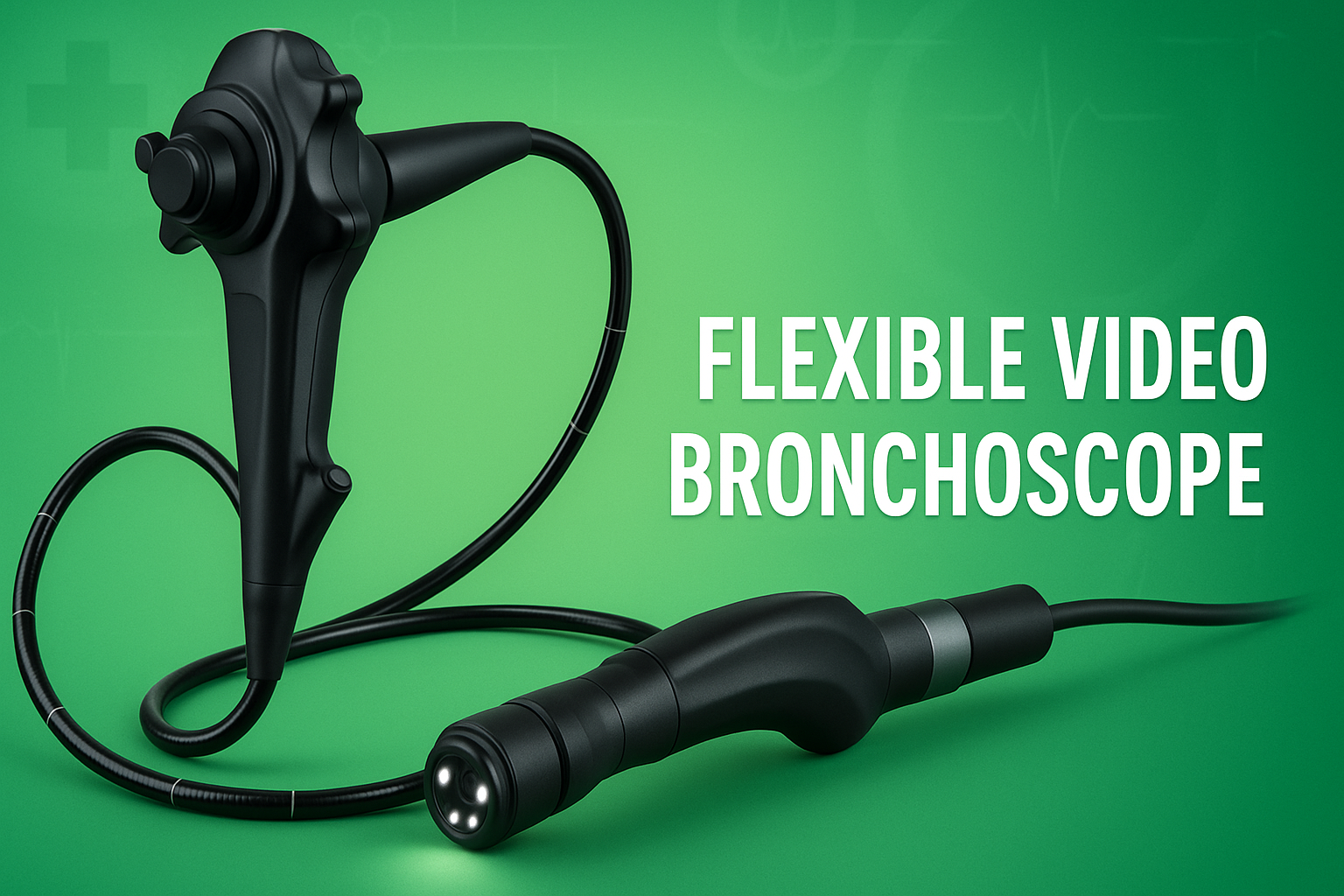Understanding the Flexible Video Bronchoscope: A Vital Tool in Modern Pulmonology
In the rapidly evolving field of medical diagnostics, the Flexible Video Bronchoscope has emerged as a game-changer, offering clinicians an advanced, minimally invasive method to visualize the respiratory tract. This device, which integrates flexible fiber optics and high-resolution video technology, is essential in diagnosing and treating a variety of pulmonary conditions. Used extensively in hospitals, clinics, and even in some emergency situations, the Flexible Video Bronchoscope provides both clarity and maneuverability, allowing for real-time visualization of the airways.
Traditionally, bronchoscopy was performed using rigid instruments that posed certain limitations in terms of accessibility and patient comfort. The introduction of the flexible bronchoscope revolutionized pulmonary medicine by enabling physicians to navigate deeper and more intricate pathways of the bronchial tree. With the incorporation of video capabilities, this medical device now provides high-definition imagery that can be displayed on monitors for better analysis, documentation, and collaborative diagnostics.
Key Components and Functionality
A flexible video bronchoscope typically consists of a long, thin, flexible tube equipped with a camera and light source at its tip. The distal end is maneuverable and can be directed by the physician using control knobs on the handle. The device also features channels for suction, irrigation, and instrument passage, enabling biopsies, lavage, or the removal of foreign bodies during a single procedure.
One of the key advantages of the flexible video bronchoscope lies in its ability to provide high-quality images in real time. This is particularly beneficial when diagnosing conditions such as lung cancer, infections, airway obstructions, chronic cough, or unexplained hemoptysis. Moreover, because it is flexible, the device causes less discomfort and can be used on patients who are awake under local anesthesia, further reducing procedural risks.
Clinical Applications
The flexible video bronchoscope is utilized in a wide range of diagnostic and therapeutic procedures:
-
Diagnosis of Pulmonary Disorders: It enables visualization of tumors, lesions, and infections within the lungs. Tissue samples can be taken for biopsy to determine the presence of diseases such as tuberculosis or cancer.
-
Foreign Body Removal: Particularly in pediatric or emergency cases, the bronchoscope allows for the swift and safe removal of inhaled objects.
-
Airway Evaluation and Management: The device is crucial for assessing airway abnormalities, vocal cord function, and tracheal positioning, especially before surgical procedures.
-
Bronchoalveolar Lavage (BAL): By flushing saline through the bronchoscope and collecting the fluid for analysis, clinicians can identify pathogens or assess inflammation levels in the lungs.
-
Interventional Bronchoscopy: In more complex procedures, such as stent placement or tumor ablation, the bronchoscope offers a precise and controllable platform.
Advantages Over Traditional Methods
Compared to earlier bronchoscopy techniques, the Flexible Video Bronchoscope provides several notable advantages. These include:
-
Enhanced Visualization: High-definition cameras capture intricate details of the bronchial walls and tissue anomalies.
-
Increased Flexibility: Its maneuverable tip allows for better navigation through the curved and narrow branches of the airway.
-
Improved Patient Comfort: The procedure can often be performed with local anesthesia, making it less stressful for patients.
-
Real-Time Recording and Teaching Utility: The video output enables real-time recording, which is invaluable for medical training and documentation.
Role in Critical Care and Emergency Medicine
The flexible video bronchoscope also plays an integral role in intensive care units (ICUs) and emergency medicine. It is often used to assess and clear airway obstructions in critically ill patients or to assist in difficult intubations. The ability to quickly visualize the airway and intervene appropriately can be life-saving, especially in cases of trauma, burns, or severe respiratory distress.
Additionally, bronchoscopy-guided endotracheal intubation, made possible with this device, is now considered a standard procedure in many ICUs. It minimizes complications and increases the success rate of tracheal intubation in patients with difficult airways.
Training and Skill Requirements
While the technology is advanced, the operation of a flexible video bronchoscope requires specific training and practice. Pulmonologists, thoracic surgeons, and respiratory therapists are often trained in bronchoscopy techniques during their medical education. Simulation labs and training modules allow practitioners to develop dexterity and precision before performing procedures on actual patients.
Moreover, maintaining the equipment is crucial. Sterilization protocols, regular calibration, and careful handling extend the life of the bronchoscope and ensure safe use for patients.
Innovations and Future Directions
The medical technology industry continues to evolve, and the flexible video bronchoscope is no exception. Newer models now include ultra-thin scopes for pediatric use, disposable bronchoscopes for infection control, and integrated ultrasound features for better assessment of surrounding structures. Artificial intelligence (AI) is also being explored to aid in pattern recognition, helping clinicians identify lesions or abnormalities with greater accuracy.
There is growing interest in portable versions of this device, particularly for use in remote or resource-limited settings. These innovations aim to bring high-quality pulmonary diagnostics to patients regardless of geographical constraints.
Considerations for Healthcare Facilities
Hospitals and clinics considering investment in flexible video bronchoscopes must take several factors into account. These include:
-
Cost vs. Utility: While initial investment is high, the long-term benefits in diagnostic accuracy and patient outcomes justify the expense.
-
Staff Training: Personnel must be adequately trained not only in operation but also in cleaning and maintenance.
-
Infection Control: Adherence to strict sterilization protocols is mandatory to avoid cross-contamination between patients.
Healthcare facilities that prioritize early detection and minimally invasive procedures are increasingly incorporating the Flexible Video Bronchoscope into their diagnostic arsenal. Its versatility and diagnostic precision align with the growing emphasis on patient-centered care.
Conclusion
The Flexible Video Bronchoscope stands at the intersection of innovation and necessity in the field of respiratory medicine. By providing a clear window into the lungs with minimal patient discomfort, it has transformed how clinicians approach pulmonary diagnostics and interventions. Whether in routine check-ups, complex surgeries, or emergency care, this sophisticated tool is indispensable for modern-day healthcare providers.
As medical technology continues to progress, one can only anticipate further enhancements in bronchoscopy tools, making procedures even more efficient, safer, and widely accessible. The flexible video bronchoscope, with its proven track record, will undoubtedly remain a cornerstone in respiratory care for years to come.







